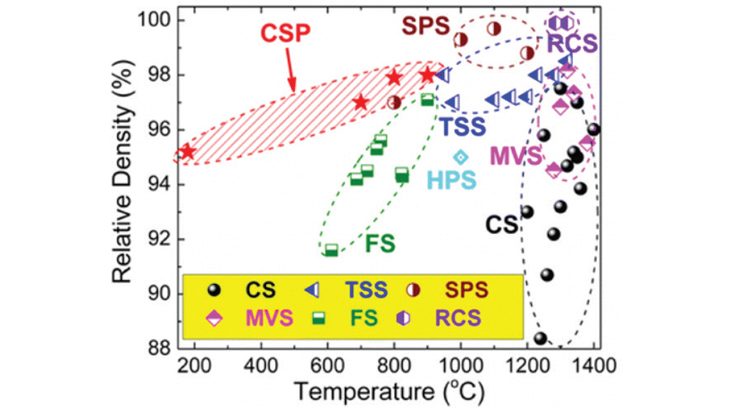Low-Temperature Sintering Process
ID# 2015-4382
Technology Summary
Most sintering processes occur at high temperatures >1000°C. This technology is a protocol to achieve dense ceramic solids at extremely low temperatures (< 300°C) via integrating particle, particle-fluid interface control, and external pressure to allow the cold sintering process (CSP). CSP uses a transient aqueous environment to effect densification by a mediated solution-precipitation process. These temperatures enable co-sintering of ceramic materials with other materials such as thermoplastics to develop unique composites and new functionalities in a single step process. The researchers have reduced the technology to practice using over 50 compositions, including advanced ceramics such as BaTiO3 and ZrO2, which are used extensively in electronic devices, among many other applications.
Application & Market Utility
The process shows promise for a diverse range of chemistries, crystal structures, and multi-material applications. The properties of selected CSP samples have physical properties essentially equivalent to samples made by conventional thermal sintering. The technology provides a roadmap to guide future studies on ultra-low temperature ceramic sintering, ceramic materials integration, printable electronics, bulk ceramics, and sustainable manufacturing processes for electro-ceramics, mechanical components, and refractories.
Next Steps
Seeking research collaboration and licensing opportunities.

